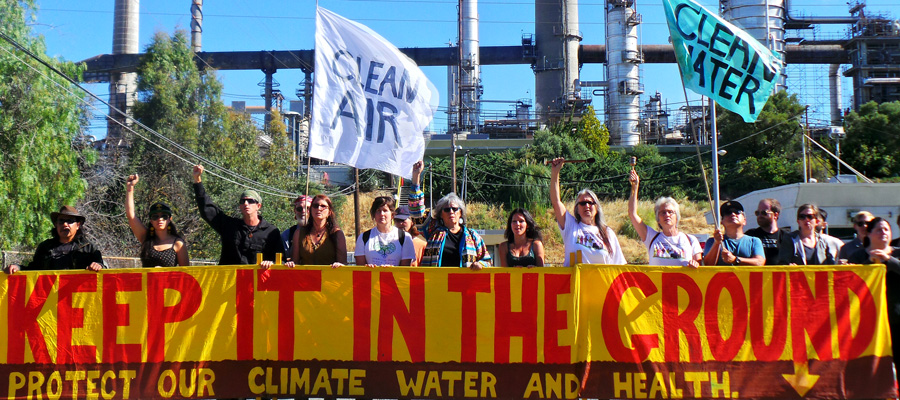The rise and fall of climate action in BC

It was a decade ago, in the February 13, 2007 Speech from the Throne, when the BC government launched into a frenzy of climate action never before seen in the province. Almost all of the BC government’s current “climate leadership” claims – so heavily promoted in a pre-election advertising spree – came out of a brief period in 2007 and 2008, in which climate action was ostensibly a top provincial priority.
As the story goes, then-Premier Gordon Campbell brought some books on climate change on his annual winter vacation in Hawaii, got religion on climate, and then brought this zeal back to his unsuspecting backbenchers and Cabinet colleagues. The previous year (2006), climate change became elevated in the public consciousness with the popular film, An Inconvenient Truth, by former Vice President Al Gore and, among the more wonkish crowd, The Stern Review on the Economics of Climate Change, written for the UK government by a former World Bank Chief Economist.
The new spotlight on climate change in the 2007 Speech from the Throne caught British Columbians by surprise, and most observers were not sure what to make of it. Throne speeches in BC have routinely offered up aspirational platitudes that were never backed by legislative teeth or budget dollars. In light of previous thematic speeches from throne that were a signature of the Gordon Campbell government (for example, 2005’s Great Goals for a Golden Decade and 2003’s Heartlands strategy) there was good reason to be skeptical.
Moreover, Campbell’s BC Liberals were an unabashedly pro-business government that spent its first term gutting the public sector, and up to that point seemed to care little about climate change. Two new coal-fired power plants were on the books and the gas revolution of fracking and horizontal drilling was underway, leading to record royalty revenues. The Gateway initiative to increase BC’s trade capacity by expanding highways and building a new Port Mann bridge was another widely noted contradiction.
The 2007 Throne Speech was the first to state a greenhouse gas target.
Nonetheless, the 2007 Speech from the Throne talked about climate change at length and announced a host of new measures. Coal-fired electricity was essentially killed by a requirement that plants have 100 per cent carbon sequestration. The Speech covered methane capture in landfills, electrification of ports and truck stops, new standards for cars and gas, a green building code plus retrofits for existing buildings, green cities, and tree planting.
The 2007 Throne Speech was the first to state a greenhouse gas (GHG) target of a one-third reduction by 2020 (relative to 2007 levels). By November 2007, the BC government added a longer-term target of an 80 per cent reduction by 2050, and passed its targets as legislation to demonstrate the government’s commitment.
To bring the critics on board, Campbell set up a Climate Action Secretariat, centrally located in the Premier’s office, and led by a senior private sector executive , Graham Whitmarsh. The Whitmarsh-led Secretariat set about listening, and came right to our office to get our take. It engaged with ENGOs, who launched into a series of meetings to deliberate on what BC’s climate plan should include.
All of this led to the 2008 “green budget,” which funded some already-announced measures, and added a Carbon Neutral Government initiative. The fiscal centrepiece, however, was the announcement of the BC carbon tax. Among climate hawks the tax won support, even though it came in at a very low level ($10 per tonne), with annual increments leading only to $30 per tonne in mid-2012. Revenue neutrality, returning carbon tax dollars to the public in the form of tax cuts, was a central and ill-advised plank for the BC government, a political move that undermined the ability to fund other aspects of the climate agenda.
The government released its Climate Action Plan in June 2008, which it claimed would get 73 per cent of the way to the 2020 targets. In the months and years to come, no further actions were taken for a Climate Action Plan 2.0 that would actually meet the government’s own targets.
The story goes that then-Premier Gordon Campbell brought some books on climate change on his annual winter vacation in Hawaii, got religion on climate, and then brought this zeal back to his unsuspecting backbenchers and Cabinet colleagues.
This was in spite of the appointment of a blue ribbon Climate Action Team to provide advice on additional measures for BC to meet its legislated targets. The Climate Action Team was established in November 2007, and included Andrew Weaver, then a University of Victoria climate scientist, now the leader of the provincial Green party, and Peter Robinson of the David Suzuki Foundation who became the point person for environmental groups (and CCPA) to provide input into the process. By the time the Climate Action Team’s July 2008 report was released, however, the BC government’s appetite for climate action had already begun to wane. The report went on to gather dust on the shelf.
Reaction to the carbon tax, from within the BC Liberal party and among the general public, may explain the retreat. The carbon tax came into effect on July 1, 2008, an example of how fast government can act when pressed. Unfortunately, gas prices spiked in the lead up to the implementation of the tax, and when the carbon tax was introduced, gas prices hit all-time highs, leading to public backlash. Politically, this found a home in the NDP’s populist “axe the tax” 2009 election campaign, which was widely criticized by academics, ENGOs and others supportive of climate action (including yours truly). This was an ill-conceived position that the party has since repudiated.
The Campbell government won re-election although it is not clear if it was because of the carbon tax or in spite of it. It was another tax – the HST, announced by surprise after the 2009 election – that ultimately brought down Campbell.
While hopes remained for more climate action to come, progress stalled. The BC government pulled out of the Western Climate Initiative, a cap-and-trade system centred on California that was supposed to cover large industrial emitters (Quebec stayed in the WCI and Ontario has now also joined). The fiscal taps turned off after 2010 when some additional money was contributed to the LiveSmart BC home energy retrofit program. The BC Budget failed to commit to further carbon tax increases, and a 2012 Carbon Tax Review put an end to the idea.
Since 2011 under Premier Christy Clark’s tenure, climate change has not been a priority. The BC government has instead doggedly pursued an expanded natural gas industry through liquefied natural gas (LNG). Clark picked up where Campbell left off by claiming this expansion of gas was good for the climate because it would substitute for coal, a talking point for which evidence has never been provided. Only the abysmal economics of LNG have kept this initiative from totally destroying BC’s GHG targets.
Since 2011 under Premier Christy Clark’s tenure, climate change has not been a priority. The BC government has instead doggedly pursued an expanded natural gas industry through liquefied natural gas (LNG).
The BC government claimed to meet its 2012 interim target of a six-per-cent reduction, but if you look closely this was based on some shady accounting. This is because the target was ostensibly met not by actual emission reductions but through offsets sold by the Pacific Carbon Trust, a Crown corporation established for that purpose. In 2013, the Auditor General published a scathing review of two major carbon offset projects that accounted for the bulk of the claim of a carbon neutral government, putting the lie to government claims of having met its interim 2012 target.
In 2015, with the Paris climate conference looming, BC made itself look busy on climate again. It launched another expert panel, the Climate Leadership Team, to provide advice that was again ignored. This team recognized that BC would not be able to meet its 2020 target largely due to plans for LNG. Its proposed 2030 replacement target and its recommendations for meeting it were left out of the new Climate Leadership Plan, which was delivered in August 2016.
Leadership is precisely the wrong word, as CCPA’s Seth Klein pointed out last year. In place of climate action, BC has been left with empty boasts in a deceptive ad campaign funded by tax dollars for partisan political purposes.
In the end, was it all a ruse? There were some positive actions, but BC never got past the baby steps. The BC government was able to tap enormous good will for its efforts (some environmentalists presented Gordon Campbell with an award at the 2009 Copenhagen climate conference). A decade later BC is no longer a climate leader but rather a climate outlaw in non-compliance with its own GHG reduction law.
With the benefit of hindsight, we can see parallels today to the Trudeau government climate process: consult widely, promote good intentions, commit to a more-limited set of actions that don’t meet the target, move on. The role of carbon pricing as a signal of being serious, but setting the price at levels too low to make a difference, is very similar as well.
Epilogue
The 2007 Throne Speech profoundly affected my career. It led to the Climate Justice Project (CJP) as a research response, driven in part by concerns about potential adverse impacts on vulnerable populations arising from the new climate policies of a government that had been driving increases in poverty and inequality in BC. We gathered academics, ENGOs, labour and first nations to consider what fair and effective climate action could look like. In early 2008 we issued a discussion paper, the CJP’s first foray, which later led to a major Social Sciences and Humanities Research Council of Canada (SSHRC) research grant, and some 30 plus publications on various aspects of climate justice.
Topics: Climate change & energy policy, Economy


